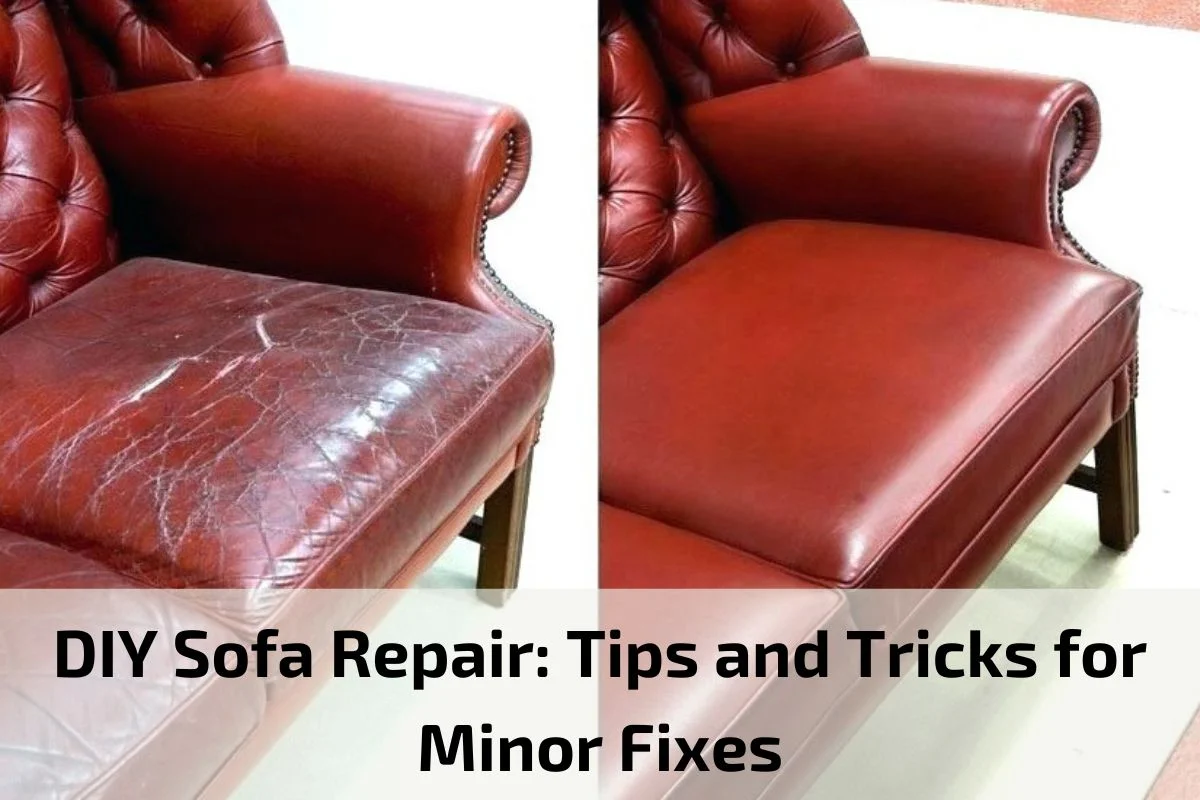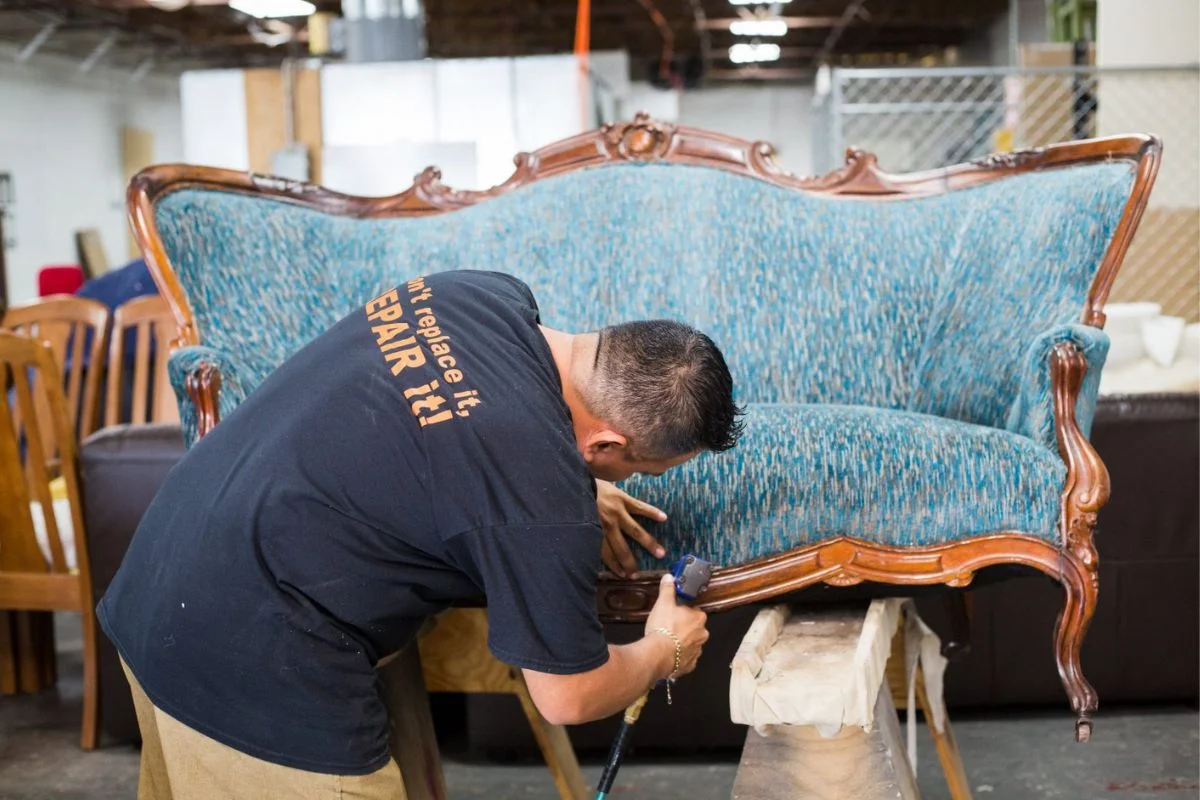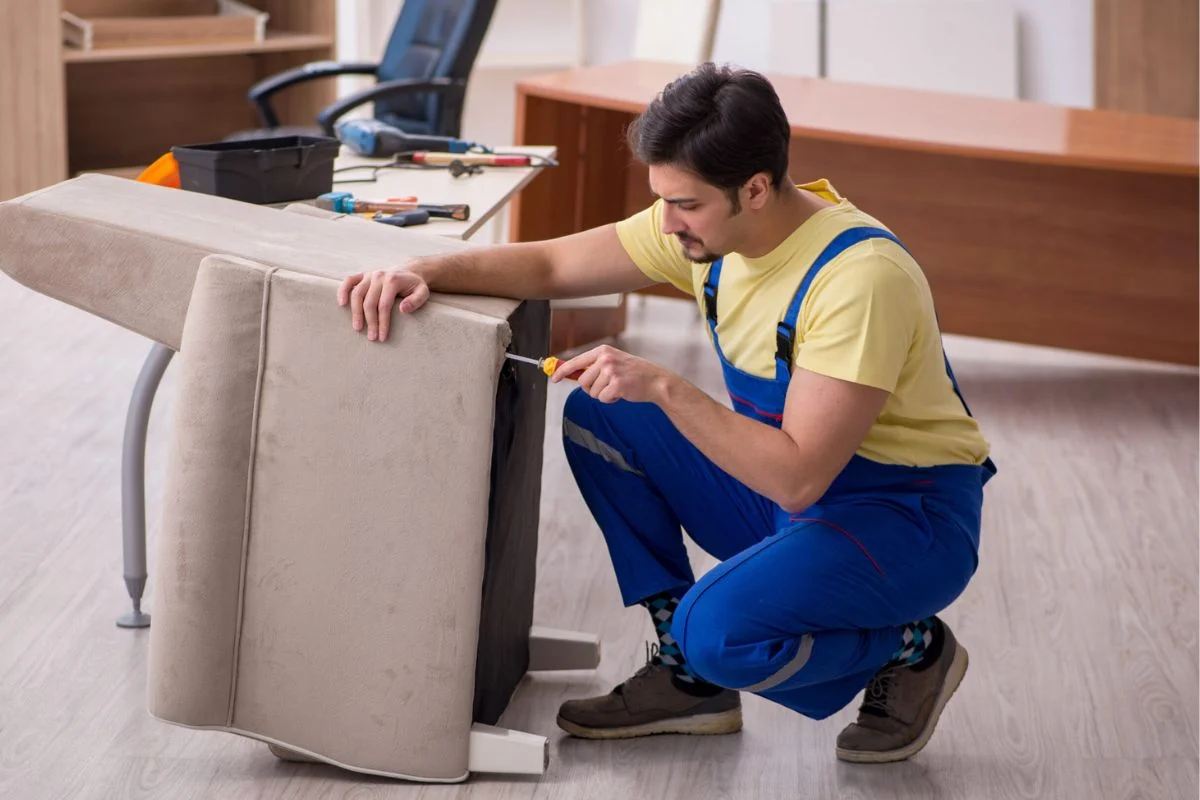
Your sofa is more than just a piece of furniture; it’s the centerpiece of your living room, the cozy spot where you relax after a long day, and the gathering place for family and friends. But over time, wear and tear can take its toll, leaving your beloved sofa in need of some attention. While major repairs may require the expertise of a professional, many minor issues can be tackled with a bit of DIY know-how.
In this guide, we’ll explore some simple tips and tricks for handling minor sofa repairs yourself. From fixing loose springs to patching up small tears, you’ll learn how to breathe new life into your sofa without breaking the bank. So roll up your sleeves and get ready to unleash your inner handyman – your sofa will thank you for it!
Importance of Sofa Repair in Preserving and Enhancing Furniture:
Sofa repair plays a crucial role in maintaining the beauty, functionality, and longevity of our furniture pieces. Here’s why sofa repair is essential in preserving and enhancing your beloved sofa:
Preserving Investment: Sofas are often significant investments for homeowners, representing a substantial financial commitment. By repairing minor issues and addressing wear and tear promptly, you can protect your investment and avoid the need for costly replacements in the future. Sofa repair allows you to maximize the value of your furniture investment by extending its lifespan and ensuring continued enjoyment for years to come.
Enhancing Comfort: A well-maintained sofa provides a comfortable and inviting space for relaxation, lounging, and socializing. Over time, however, sagging cushions, broken springs, or worn upholstery can compromise the comfort and support of your sofa. Repairing these issues restores the comfort and functionality of your sofa, ensuring that it remains a cozy retreat for you and your family.
Preserving Aesthetic Appeal: The appearance of your sofa contributes significantly to the overall aesthetic of your living space. Stains, tears, and faded upholstery can detract from the beauty and elegance of your sofa, making it look tired and worn. Sofa repair addresses these cosmetic issues, restoring the pristine appearance of your sofa and enhancing the visual appeal of your home décor.
Maintaining Structural Integrity: Structural issues such as loose joints, broken frames, or damaged legs can compromise the stability and safety of your sofa. Ignoring these issues can lead to further damage and potential safety hazards. Sofa repair ensures that your furniture maintains its structural integrity, providing a sturdy and reliable seating solution for you and your loved ones.
Preserving Sentimental Value: Many sofas hold sentimental value, representing cherished memories and moments shared with family and friends. Whether it’s the sofa you inherited from your grandparents or the one where you watched countless movies with your loved ones, repairing your sofa allows you to preserve its sentimental value and continue creating memories for years to come.
Benefits of Sofa Repair:
Sofa repair offers a multitude of benefits that go beyond simply fixing a piece of furniture. Here are some key advantages of investing in sofa repair:
Extended Lifespan: Repairing minor issues and addressing wear and tear promptly can significantly extend the lifespan of your sofa. By maintaining its structural integrity and addressing cosmetic concerns, sofa repair helps prolong the life of your furniture investment, saving you money on premature replacements.
Cost-Effectiveness: Repairing a sofa is often more cost-effective than replacing it entirely. Minor repairs, such as fixing a loose frame or replacing worn upholstery, are generally less expensive than purchasing a brand-new sofa. Investing in sofa repair allows you to maximize the value of your existing furniture without breaking the bank.
Preservation of Sentimental Value: Many sofas hold sentimental value, representing cherished memories and moments shared with loved ones. Repairing your sofa allows you to preserve its sentimental value and continue enjoying it for years to come. Whether it’s the sofa where you gathered for family movie nights or the one where you shared intimate conversations with friends, sofa repair ensures that these memories live on.
Enhanced Comfort and Functionality: Sofa repair restores the comfort and functionality of your furniture, ensuring that it remains a comfortable and inviting space for relaxation and socializing. By addressing issues such as sagging cushions, broken springs, or worn upholstery, sofa repair enhances the overall comfort and usability of your sofa, providing a cozy retreat for you and your family.
Sustainable Choice: Repairing your sofa is a sustainable and environmentally friendly choice. Rather than discarding your old sofa and contributing to landfill waste, sofa repair allows you to reuse and repurpose existing furniture. By reducing the demand for new furniture production, sofa repair helps conserve natural resources and reduce carbon emissions associated with manufacturing and transportation.
Customization and Personalization: Sofa repair offers the opportunity to customize and personalize your furniture to suit your unique preferences and style. Whether you choose to update the upholstery fabric, add decorative accents, or modify the design elements, sofa repair allows you to breathe new life into your sofa and create a one-of-a-kind piece that reflects your personality and taste.
DIY Sofa Repair Techniques:
Repairing your sofa doesn’t always require professional assistance. With some basic tools, materials, and a little know-how, you can tackle common sofa issues and restore your furniture to its former glory. Here are some DIY sofa repair techniques you can try at home:
Fixing Sagging Cushions:
- Remove the cushions from the sofa and inspect them for sagging or flattened areas.
- If the cushions lack support, add additional filling such as foam inserts or batting to restore their shape and resilience.
- Insert the filling evenly into the cushions and fluff them up to distribute the filling evenly.
Patching Tears and Scratches:
- Clean the affected area with a mild soap and water solution to remove any dirt or debris.
- If dealing with fabric upholstery, apply a fabric patch to cover the tear, securing it in place with fabric glue or a needle and thread.
- For leather upholstery, use a leather repair kit to patch tears, scratches, or gouges. Apply the leather filler to fill in the damaged area and smooth it out with a spatula. Once dry, sand the repaired area and apply leather dye or colorant to match the surrounding leather.
Tightening Loose Joints:
- Inspect the sofa frame for loose or wobbly joints, particularly in the arms, legs, or backrest.
- Tighten loose screws or bolts using a screwdriver or wrench. Apply wood glue to any loose joints and clamp them together until the glue sets.
- For more severe damage, such as split wood or broken joints, reinforce the area with metal brackets or braces.
Repairing Broken Springs:
- If your sofa has sagging or broken springs, locate the damaged spring and remove it from the sofa frame.
- Replace the broken spring with a new one of the same size and type, securing it in place with spring clips or fasteners.
- Alternatively, you can reinforce the existing springs by adding additional support with webbing straps or plywood panels.
Restoring Faded Upholstery:
- If your sofa upholstery has faded or discolored over time, consider dyeing or reupholstering the fabric to refresh its appearance.
- Use a fabric dye or upholstery paint to restore the color of the fabric, following the manufacturer’s instructions for best results.
- Alternatively, you can reupholster the sofa cushions or entire frame with new fabric to give it a fresh look and feel.
Tips for Maintaining Repaired Sofas:
After completing sofa repairs, it’s essential to implement proper maintenance practices to preserve the integrity and longevity of your furniture. Here are some helpful tips for maintaining repaired sofas:
Regular Cleaning: Keep your sofa clean by vacuuming or gently brushing the upholstery to remove dust, dirt, and debris. Use a soft brush attachment or upholstery cleaning tool to prevent damage to repaired areas.
Spot Cleaning: Address spills and stains promptly to prevent them from setting into the fabric or leather upholstery. Blot the affected area with a clean, absorbent cloth and use a mild soap and water solution or a specialized upholstery cleaner to remove stains gently.
Avoid Harsh Chemicals: Refrain from using harsh chemical cleaners, solvents, or abrasive cleaning tools on your repaired sofa, as they can damage the upholstery and undo the repairs. Stick to gentle cleaning solutions and test them in an inconspicuous area before applying them to the entire surface.
Protect from Sunlight: Position your sofa away from direct sunlight or use window treatments to protect it from UV rays, which can cause fading and discoloration of the upholstery. Consider rotating or rearranging your furniture periodically to ensure even exposure to sunlight.
Use Furniture Protectors: Place furniture pads or protective covers under sofa legs to prevent scratches and damage to flooring surfaces. Use coasters or trays to protect the arms and surface of the sofa from spills, stains, and scratches caused by drinks or decorative items.
Monitor for Signs of Wear: Keep an eye on your repaired sofa for any signs of wear and tear, such as loose threads, fraying seams, or sagging cushions. Address these issues promptly to prevent further damage and maintain the integrity of the repairs.
Avoid Excessive Weight: Avoid sitting or placing heavy objects on repaired areas of the sofa, as this can cause undue stress and strain on the upholstery and frame. Distribute weight evenly across the sofa to prevent premature wear and damage.
Schedule Professional Inspections: Periodically have your repaired sofa inspected by a professional upholstery technician to ensure that repairs are holding up well and to address any emerging issues. Professional maintenance can help prolong the life of your sofa and prevent costly repairs down the line.
Conclusion:
Maintaining a repaired sofa is essential to ensure its longevity, comfort, and aesthetic appeal. By implementing proper cleaning practices, protecting against sunlight and spills, and monitoring for signs of wear, you can preserve the integrity of sofa repairs and enjoy your furniture for years to come.




